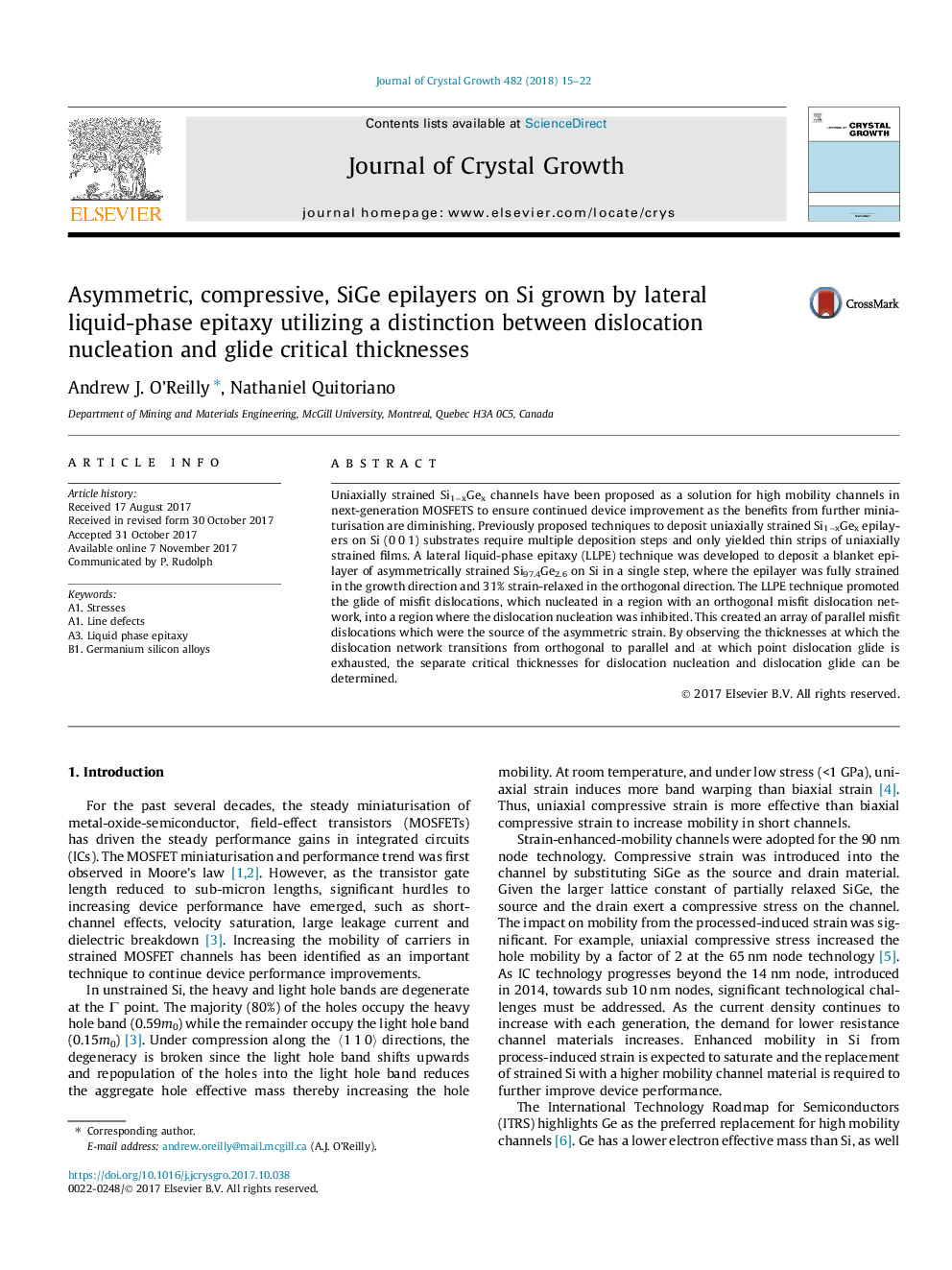| Article ID | Journal | Published Year | Pages | File Type |
|---|---|---|---|---|
| 8149011 | Journal of Crystal Growth | 2018 | 8 Pages |
Abstract
Uniaxially strained Si1âxGex channels have been proposed as a solution for high mobility channels in next-generation MOSFETS to ensure continued device improvement as the benefits from further miniaturisation are diminishing. Previously proposed techniques to deposit uniaxially strained Si1âxGex epilayers on Si (0â¯0â¯1) substrates require multiple deposition steps and only yielded thin strips of uniaxially strained films. A lateral liquid-phase epitaxy (LLPE) technique was developed to deposit a blanket epilayer of asymmetrically strained Si97.4Ge2.6 on Si in a single step, where the epilayer was fully strained in the growth direction and 31% strain-relaxed in the orthogonal direction. The LLPE technique promoted the glide of misfit dislocations, which nucleated in a region with an orthogonal misfit dislocation network, into a region where the dislocation nucleation was inhibited. This created an array of parallel misfit dislocations which were the source of the asymmetric strain. By observing the thicknesses at which the dislocation network transitions from orthogonal to parallel and at which point dislocation glide is exhausted, the separate critical thicknesses for dislocation nucleation and dislocation glide can be determined.
Related Topics
Physical Sciences and Engineering
Physics and Astronomy
Condensed Matter Physics
Authors
Andrew J. O'Reilly, Nathaniel Quitoriano,
